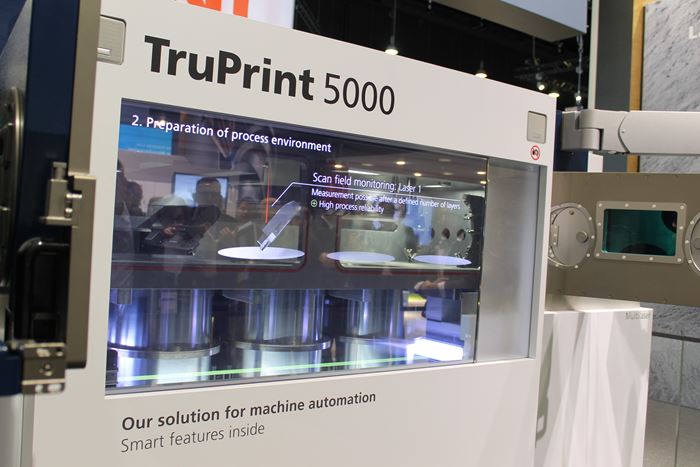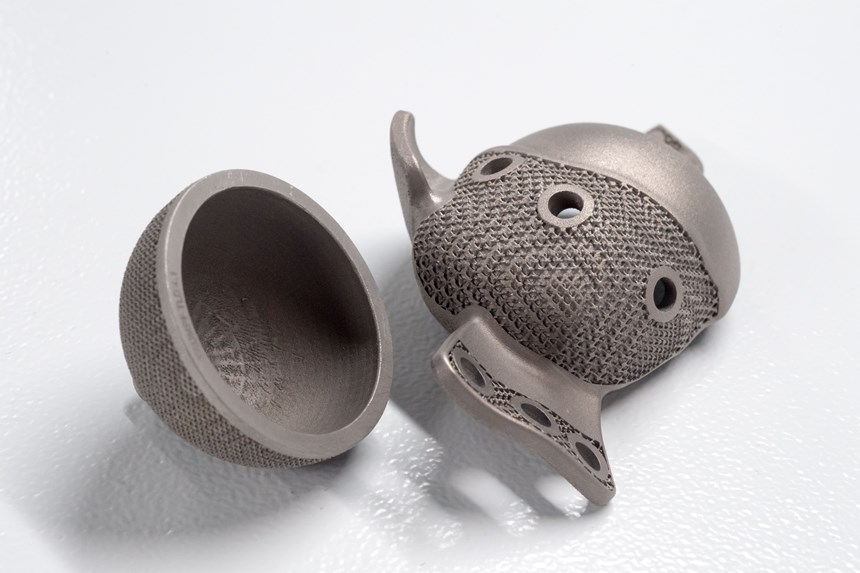3D Printing Heat-Resistant Materials on a Preheated Substrate
Preheating the substrate plate in laser beam melting to 500°C prevents crack formation in AM parts made from carbon tool steels.
For plastic injection mold tools, die casting tools, extrusion or hydroforming tools, low-alloyed tool steels like carbon tool steel 1.2343 are the material of choice.
Though they offer high toughness and heat resistance, crack resistance and good thermal conductivity, these low-alloyed tool steels are not easy to process via laser beam melting (LBM) because the components tend to crack during 3D printing. According to laser machine manufacturer Trumpf, additively manufactured components made of 1.2343 high-alloy hot-work steel are not able to withstand the temperature drop after the laser beam has melted the component surface in the process chamber.
To eradicate this issue, Trumpf has introduced a pre-heating option in its TruPrint 5000 laser metal fusion (LMF) machine. The substrate plate, where the machine’s three lasers join forces to melt the component geometry, can be preheated to 500°C, reducing the temperature drop after the process. This improves the machining quality of materials such as titanium, as it reduces stress in the component.
Consequently, preheating offers major advantages for prostheses and implants produced using additive manufacturing, Trumpf says. When the ambient temperature drops too sharply, the parts warp and are required to undergo postprocessing. Without that temperature drop, the need for support structures (which are often difficult to add and remove) can also be eliminated. Preheating also reduces the need for downstream heat treatment, makes the titanium more resilient and makes the implants more durable, the company says.














